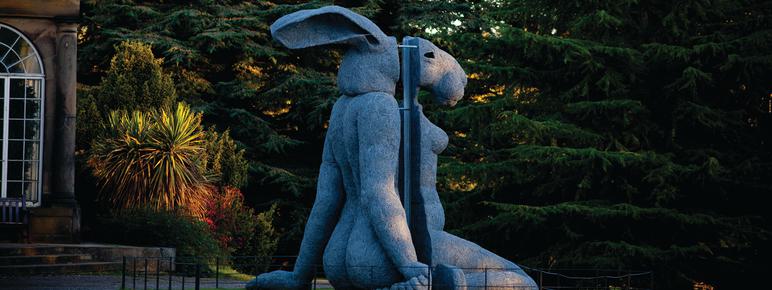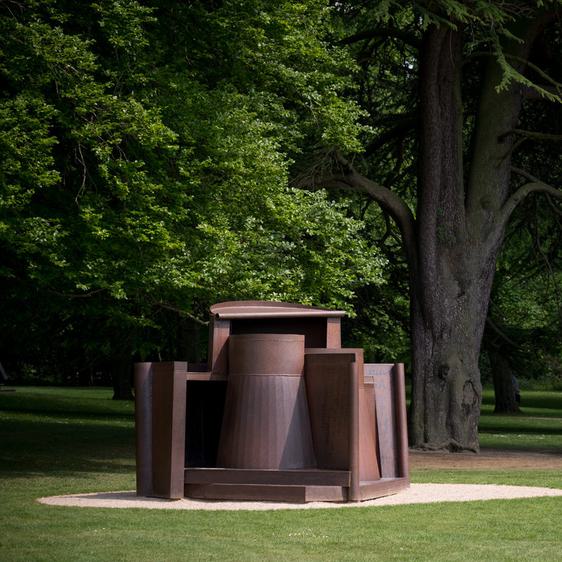
Sophie Ryder: Sitting
Art Outdoors /Sophie Ryder: Sitting
Animals are at the heart of Sophie Ryder’s art practice and her life. Her work abounds with mysterious half-human, half-animal hybrids that seem to spring from a fusion of fairytales, dreams and mythology. Ryder’s enduring character known as the Lady Hare – which she describes a companion for the Minotaur – combines a female body with the head of a hare, a mystical creature in folklore. Like wearing a mask, the persona of the hare makes the figure’s identity fluid and enigmatic. With her highly personal, often playful, style and narratives, the artist explores sexuality and spirit.
Wire has been an important medium to Ryder throughout her career, and is a demanding material to manipulate and shape on this monumental scale. Sitting is over 5 metres high and the figure is bisected vertically so that the surrounding landscape can be seen through it.
You might also like
- Art Outdoors

Anthony Caro: Dream City
- Art Outdoors

Grenville Davey: Well
- Art Outdoors

Kimsooja: A Needle Woman: Galaxy was a Memory, Earth is a Souvenir
Kimsooja developed this elegant and towering conical sculpture in collaboration with scientists at Cornell University. The nanopolymer in which its panels are covered enhances the refractive qualities of light, giving an iridescent effect similar to that which occurs naturally on the wings of a butterfly or a beetle’s shell. It is responsive to changing light conditions and brought to life by sunlight on its surface. - Art Outdoors

Joao Vasco Paiva: Standard Kitchen
For Standard Kitchen, Vasco Paiva collaborated with artisans in East Bali. Together, they used the traditional method of carving Batu Candi, a lava stone often used for building temples and shrines. The stone was shaped to create a life-sized replica of a modular kitchen to consider the processes and spaces that are integral to everyday life.


